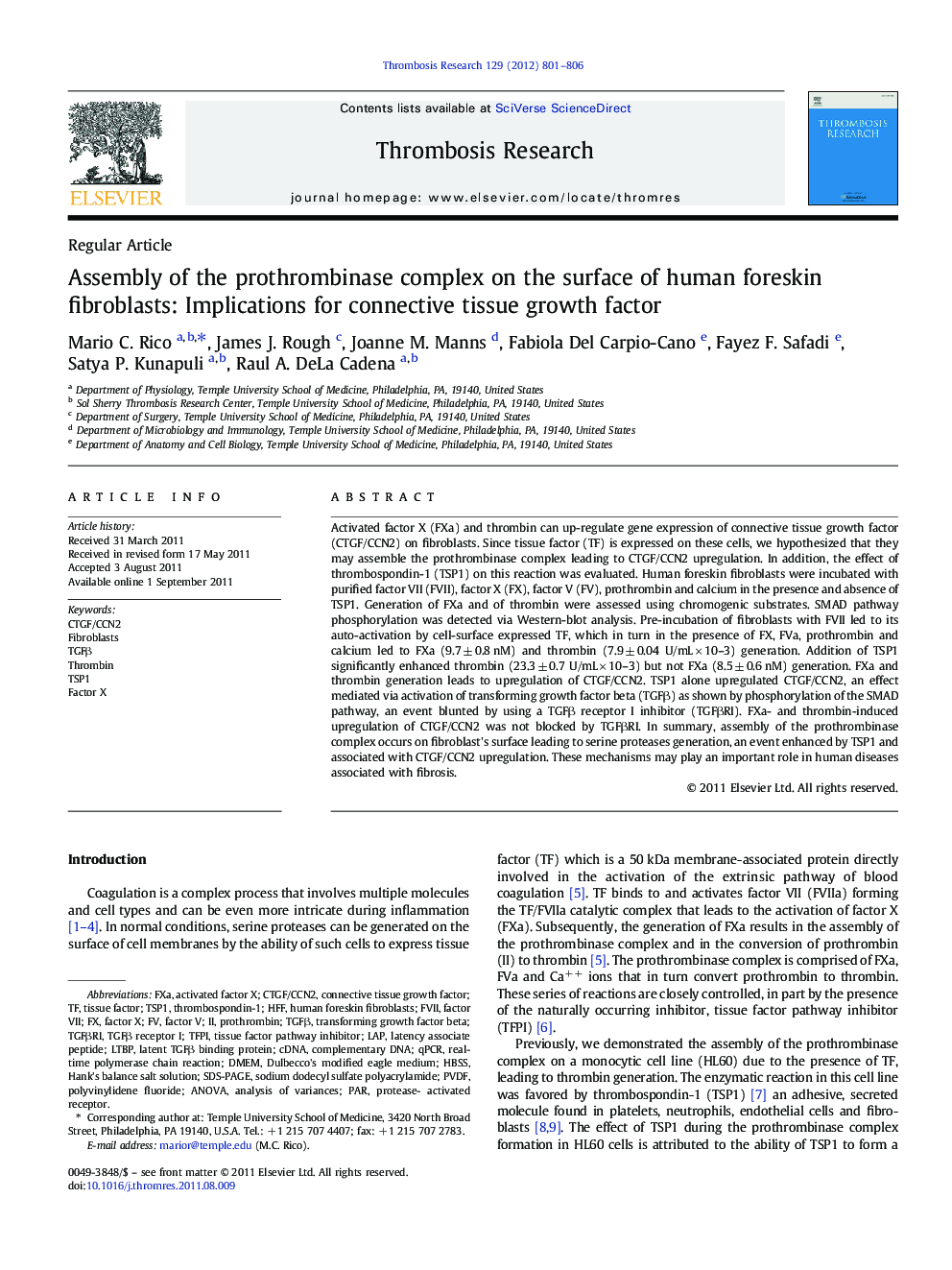| Article ID | Journal | Published Year | Pages | File Type |
|---|---|---|---|---|
| 6002574 | Thrombosis Research | 2012 | 6 Pages |
Abstract
Activated factor X (FXa) and thrombin can up-regulate gene expression of connective tissue growth factor (CTGF/CCN2) on fibroblasts. Since tissue factor (TF) is expressed on these cells, we hypothesized that they may assemble the prothrombinase complex leading to CTGF/CCN2 upregulation. In addition, the effect of thrombospondin-1 (TSP1) on this reaction was evaluated. Human foreskin fibroblasts were incubated with purified factor VII (FVII), factor X (FX), factor V (FV), prothrombin and calcium in the presence and absence of TSP1. Generation of FXa and of thrombin were assessed using chromogenic substrates. SMAD pathway phosphorylation was detected via Western-blot analysis. Pre-incubation of fibroblasts with FVII led to its auto-activation by cell-surface expressed TF, which in turn in the presence of FX, FVa, prothrombin and calcium led to FXa (9.7 ± 0.8 nM) and thrombin (7.9 ± 0.04 U/mL Ã 10-3) generation. Addition of TSP1 significantly enhanced thrombin (23.3 ± 0.7 U/mL Ã 10-3) but not FXa (8.5 ± 0.6 nM) generation. FXa and thrombin generation leads to upregulation of CTGF/CCN2. TSP1 alone upregulated CTGF/CCN2, an effect mediated via activation of transforming growth factor beta (TGFβ) as shown by phosphorylation of the SMAD pathway, an event blunted by using a TGFβ receptor I inhibitor (TGFβRI). FXa- and thrombin-induced upregulation of CTGF/CCN2 was not blocked by TGFβRI. In summary, assembly of the prothrombinase complex occurs on fibroblast's surface leading to serine proteases generation, an event enhanced by TSP1 and associated with CTGF/CCN2 upregulation. These mechanisms may play an important role in human diseases associated with fibrosis.
Keywords
LAPTGFβRITSP1CTGF/CCN2latent TGFβ binding proteinTFPIFXaFVIIHFFLTBPHBSSTGFβDMEMqPCRPVDFcDNAComplementary DNADulbecco's modified Eagle MediumSDS-PAGETransforming Growth Factor Betaanalysis of variancesANOVAThrombospondin-1ThrombinParTissue factorFactor VFactor VIIFactor XConnective tissue growth factoractivated Factor XFibroblastshuman foreskin fibroblastsTissue factor pathway inhibitorreal-time polymerase chain reactionprothrombinPolyvinylidene fluoride
Related Topics
Health Sciences
Medicine and Dentistry
Cardiology and Cardiovascular Medicine
Authors
Mario C. Rico, James J. Rough, Joanne M. Manns, Fabiola Del Carpio-Cano, Fayez F. Safadi, Satya P. Kunapuli, Raul A. DeLa Cadena,
